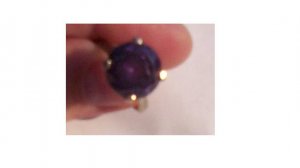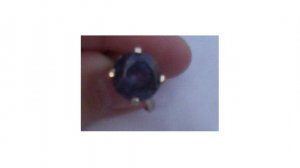I am in possession of an Alexandrite purchased by my grandfather in Singapore sometime in the early part of the 20th century. My grandparents did not know the meaning of the word frugal nor do I believe my grandfather would have knowingly purchased a synthetic stone but anything is possible. I do know my grandmother once dove under a bed to retrieve the stone after it popped out of the setting. Did I fail to mention this occurred during an air raid on Hong Kong during the Second World War? I just don''t know if she would have done so were the stone a synthetic.
It is a substantial stone, almost as big around as a dime. Could it be real? Were there synthetic stones around at the time when it was purchased? I will post pictures should anybody be interested.
I appreciate any help with this.
It is a substantial stone, almost as big around as a dime. Could it be real? Were there synthetic stones around at the time when it was purchased? I will post pictures should anybody be interested.
I appreciate any help with this.







300x240.png)